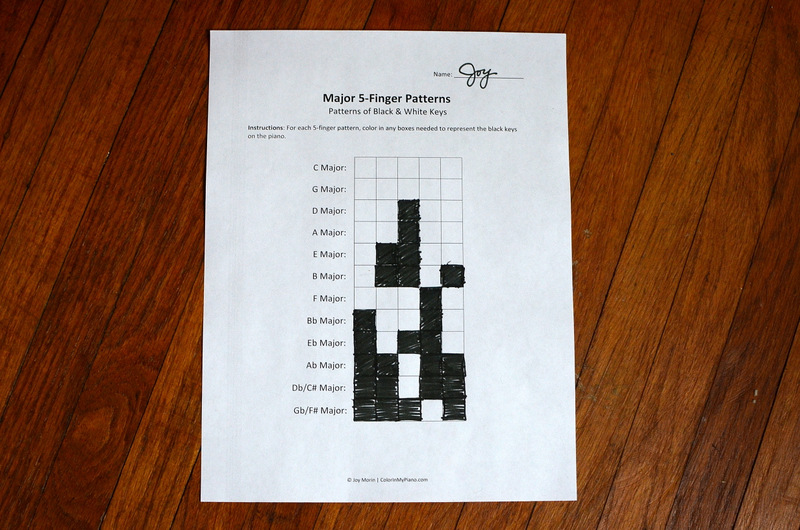 Every teacher approaches technique exercises a little bit differently. I usually start teaching students 5-finger patterns (aka pentascales) during the first month or two of study. I start by assigning the C Major 5-finger pattern (5FP) and sometimes G Major along with it. Every week or every-other-week, I add a new 5FP to their list, following the Circle of 5ths.
Every teacher approaches technique exercises a little bit differently. I usually start teaching students 5-finger patterns (aka pentascales) during the first month or two of study. I start by assigning the C Major 5-finger pattern (5FP) and sometimes G Major along with it. Every week or every-other-week, I add a new 5FP to their list, following the Circle of 5ths.
Personally, I don’t teach the theory behind the major 5FP’s until a little bit later (i.e., the pattern of whole and half steps: WWHW). To introduce each 5FP, I let the student figure out what black keys are needed — using their ear. I say: “Today we are going to add the D 5-finger pattern. There is a black key in this 5FP. Do you think you can figure out where the black key needs to be?” The student first plays the 5FP with all white keys, and we discuss that it doesn’t sound right — it doesn’t match the sound of the C and G 5FPs. The student then uses his/her ear and trial-and-error to discover that the 3rd note should be a black key. Now it matches! Leading the student through this kind of discovery makes the learning moment memorable.
The beauty of this approach also is that the student inherently learns the concept of transposition through this moment! The concept of being “in a key” and the concept of transposition between keys is such an integral part of the way music works, but is so often it is neglected until students begin playing scales and learning key signatures. However, after learning just two or three 5FPs, the teacher can easily ask the student to play a few familiar folk tunes by ear in different keys. (See my printable from a couple years back, “Melodies to Play by Ear and Harmonize.”) The student will understand that depending on what note the tune begins, they will need certain black keys in order for the tune to sound “right.” Continue reading “Teaching 5-Finger Patterns (with a Free Worksheet)”


